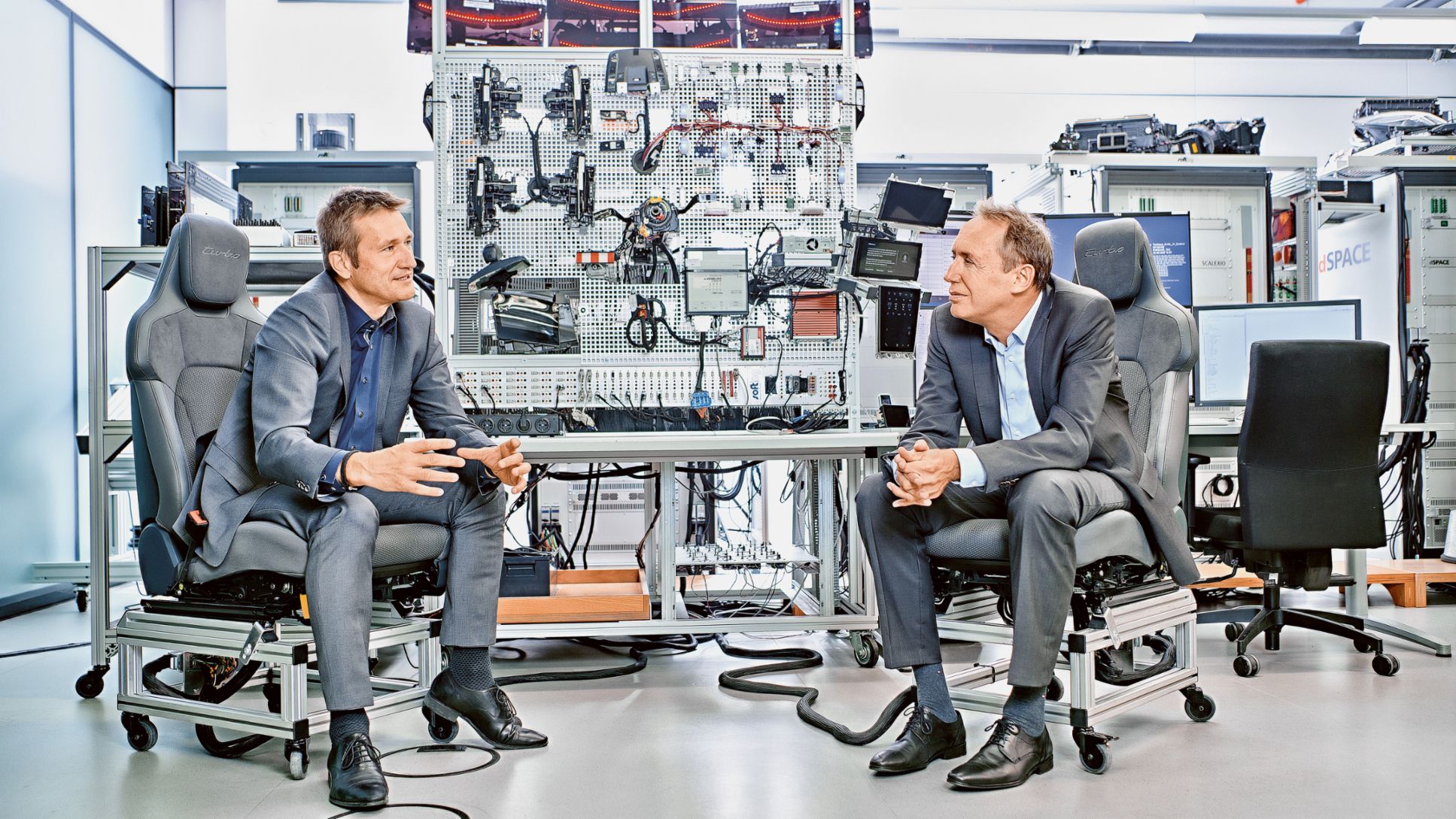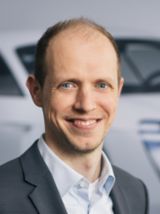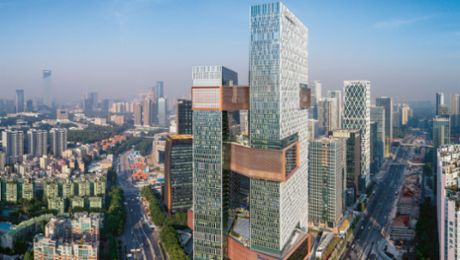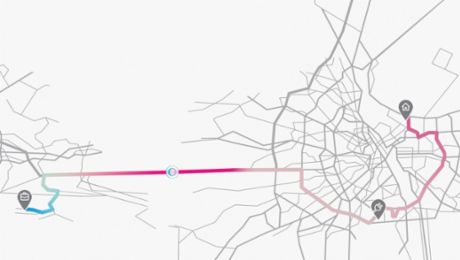What are the central trends in E/E development, and what are the challenges?
Oliver Seifert: The first trend is the further development of the battery electric vehicle, driven by the requirements of legislation and the markets— but also by our own claim at Porsche to make electric driving even more attractive, for example in terms of range and charging performance. The second trend is the seamless integration of the vehicle into the customer’s digital ecosystem. The resulting challenges affect the development processes of the E/E system architecture in particular. This is because the demands placed on us are changing very dynamically. We must optimize our processes so that we can react quickly to new market needs. It is therefore a combination of new tasks and short timeframes that will shape future developments.

What will the E/E architecture of the future look like?
Seifert: Future E/E architecture must perform a difficult balancing act. On the one hand, it must offer a high degree of flexibility in order to be able to cover the requirements of the future—although they have not yet been defined in detail, of course. In doing so, we must not lose sight of aspects such as costs and the vehicle package. On the other hand, we have to guarantee a high level of functional stability of the E/E system so that the system developers have a valid platform on which to present the new functional scopes. With our current E/E architectures we have created a good basis for this. The core of future architecture concepts is the E³ approach. The vehicle functions run on a few highly complex control units, the HCPs (High Performance Computing Platforms). In addition, there are a large number of simple controllers for controlling the mechatronic sensors and actuators in the E/E network. We will probably have as many electronic and mechatronic components in the vehicle as we have today, but the intelligence and complexity will be distributed differently.
Dirk Lappe: In the practical implementation of the E/E architecture, we will have to comply with strict legal requirements in the automotive sector, for example with regard to cyber security. This gives us a clear framework for designing future system architectures. Compared to consumer electronics products, we therefore face completely different tasks. Another point is product life. A smartphone is considered obsolete after six years at the latest, at which point software updates for the operating system are no longer offered. When we bring a vehicle onto the market, it must still be capable of being updated after ten or 15 years. The E/E development has the important cross-sectional task of keeping the vehicle’s functions safe and running throughout the vehicle’s service life.
“Future E/E architecture must perform a difficult balancing act. On the one hand, it must offer a high degree of flexibility and, on the other hand, we must guarantee a high degree of functional stability.” Oliver Seifert, Vice President Electrics/Electronics Development at Porsche AG
To what extent do functions and software characterize the Porsche of the future?
Seifert: Software is already the backbone of our vehicles today. No modern car can drive without bits and bytes. And it is precisely this software that gives us the opportunity to design Porsche-specific vehicle characteristics that would previously have been impossible or difficult to implement via mechanics. One example is the matrix light, which has turned yesterday’s simple headlights into a modern assistance system. In the past, headlights were only used to illuminate the road. Today’s matrix system does the same, but controls the light intensity so intelligently that oncoming traffic is not dazzled and disturbing reflections from road signs at the edge of the road are avoided. And if a person is standing at the side of the road, the matrix light illuminates this area in particular to draw attention to the potential hazard situation. We create the preconditions for integrating new features into the vehicle through the underlying E/E architecture. It must therefore be designed with the future in mind, so that we can react to requirements that we cannot even foresee today.
What does Porsche Engineering do in the area of function and software development?
Lappe: We see ourselves as a complete vehicle developer that implements new functions holistically, including the software. This is a big difference to competitors who can only create software and have no know-how about vehicle development. Software gives us the opportunity to optimally implement the potential of a hardware component. For example, an air suspension system can be applied with a standard set-up, or you can take advantage of the scope for design and use the same hardware to create a chassis that glides over potholes in a highly comfortable manner and, at the touch of a button, offers dynamic cornering ability typical of a sports car. We are car freaks who also love to program.
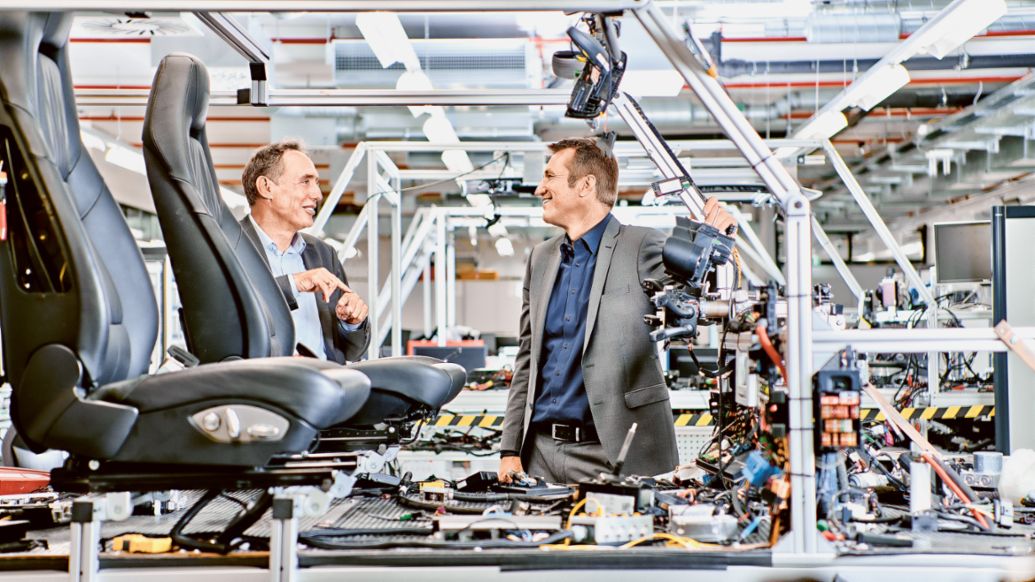
How does the E/E collaboration between Porsche and Porsche Engineering work?
Seifert: Porsche Engineering is a constant in our E/E development. I assume that this collaboration will be much more intensive in the coming years. This is particularly true for developments in the future fields of connectivity and e-mobility. The nice thing about Porsche Engineering is that the engineers there can do both: software and cars.
Lappe: One of our most important efforts in recent years and decades has been to support the development of E/E competence within Porsche AG. The result is a symbiosis that continues to this day. Today we work as a strategic partner on larger software scopes and other E/E topics.
“We see ourselves as a complete vehicle developer that implements new functions holistically, including the software.” Dirk Lappe, Managing Director of Porsche Engineering
How important are local E/E solutions for different markets?
Seifert: In regions like Asia or North America, customers today demand their own specific solutions. While there are similarities, there are also major differences due to the respective cultural backgrounds, digital ecosystems and legal requirements. The ever-increasing diversification of the markets poses great challenges for the entire industry. The variants must be taken into account throughout the entire development process, right up to the functional validation, which can only take place locally in the respective markets. To do this, we need development partners such as Porsche Engineering that understand the special characteristics of the individual regions and the cultural background there.
Lappe: We have found that you have to be on site in China in order to understand the market there and to be able to implement certain developments quickly and purposefully. For around four years now, we have therefore been using our capacities in China to develop and verify locally specific solutions for Porsche, among other activities. Our team in China consists primarily of local colleagues who, like us, have gasoline and electrons in their blood, but who also have a local connection. During development, they work closely with their Chinese colleagues from Porsche China and Porsche Digital, but of course also with our experts in Germany.
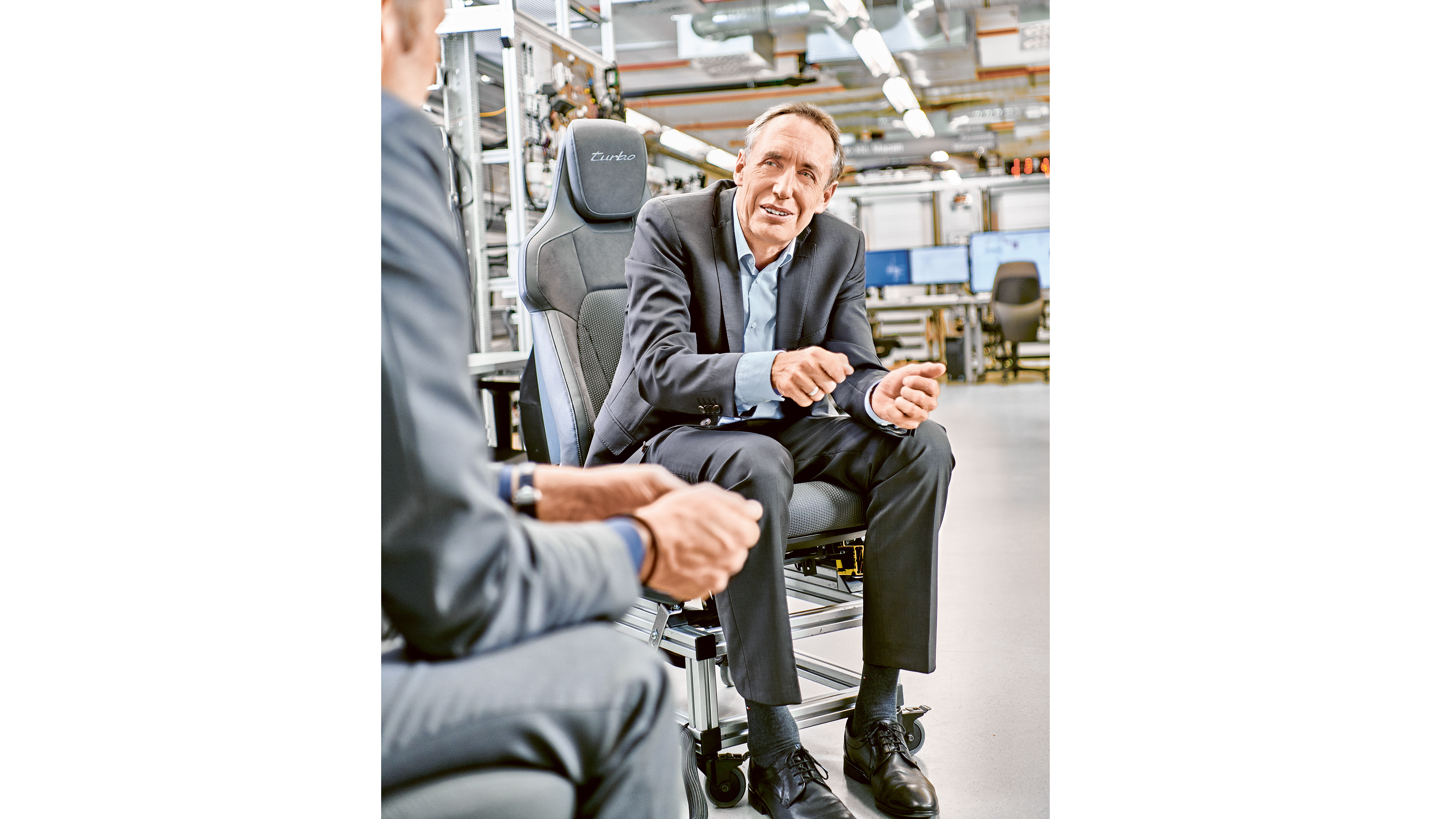
What role does E/E development at Porsche play compared to other development areas such as body, powertrain, or chassis?
Seifert: Today’s functions are no longer developed by one department alone. Our task is to ensure that the infrastructure for all development areas involved is uniform. This includes scopes such as control units, basic software, diagnostic functions, and the entire electronic architecture. With the electronics platform, we create the stable foundation, so to speak, on which colleagues from the other development areas can then implement the functions.
How are Porsche and Porsche Engineering dealing with the transformation in automotive development?
Lappe: The importance of software and the expertise to develop it grows with the transformation. We have set up a change process to integrate experts from the classic trades more closely into the software development area. We have a large number of engineers with 20 or more years of professional experience on board who are prepared to leave their original fields of work and contribute to the further development of our software capability. The employees are particularly valuable to the company after the transformation, as they bring both mechanical and electronic understanding to the function development discipline.
Seifert: It is important to actively pursue a transformation process and not to wait until you are forced to do so by external factors. We don’t want to chase the proverbial carrot, but rather lead the race. And as you know, we feel very comfortable on the race track. However, we do not have the aspiration to follow every trend as a matter of course. You always need a stable basis as the starting point for a successful transformation into new worlds of working, processes, and products. And we must never forget that there are people behind every transformation. We see ourselves as one family and make sure that we do not overburden our employees, but give them the necessary support.
“We need the creativity of our engineers. This is an innovation process that can never be digitalized.” Dirk Lappe
What role does sustainability play in the E/E development of the future?
Seifert: A very big role. We pursue the idea of sustainability throughout the entire value chain. In component development, we take these requirements into account, for example, in material selection and component design. But with our E/E architecture and our functions, we also contribute to sustainability in terms of vehicle operation. For example, we design the system so that the available energy in the vehicle is always used as efficiently as possible. Another point is to ensure that the vehicles in the field last as long aspossible. Our flexible electronics architecture can be upgraded to the latest state of the art over the years, so that customers can and want to use their vehicles for a long time.
Is there a Porsche feature that you would not digitalize or electrify?
Seifert: The design of our vehicles is an emotional experience and certainly something that cannot be digitalized per se. Otherwise, there are no limits to one’s imagination. However, it is important that the result feels typical for Porsche; otherwise digitalization makes no sense. We have already shown how typical Porsche electrification works in a variety of areas: whether it’s steering, brakes, powertrain units or other systems, regardless of the model series. And I can only recommend it to anyone who has not yet experienced these characteristics themselves: Try them out in the Porsche Taycan!
Lappe: We will not be able to replace humans with computers in the development process. We need the creativity of our engineers to improve individual functions and develop new features. This is an innovation process that can never be digitalized.
“We pursue the idea of sustainability throughout the entire value chain.” Oliver Seifert
Which E/E project outside of automotive development would you like to dedicate yourself to?
Lappe: It would be fascinating to develop a translation tool that works in real time and allows you to communicate with everyone around the world in their native language. By communicating together, many misunderstandings could be cleared up and some of the current global challenges could be overcome more easily.
Seifert: I can only agree with that. Communication is the be-all and end-all. This is the case with people—and also with vehicles.
Info
Interview: Richard Backhaus
Photos: Steffen Jahn
Text first published in the Porsche Engineering Magazine, issue 1/2021
